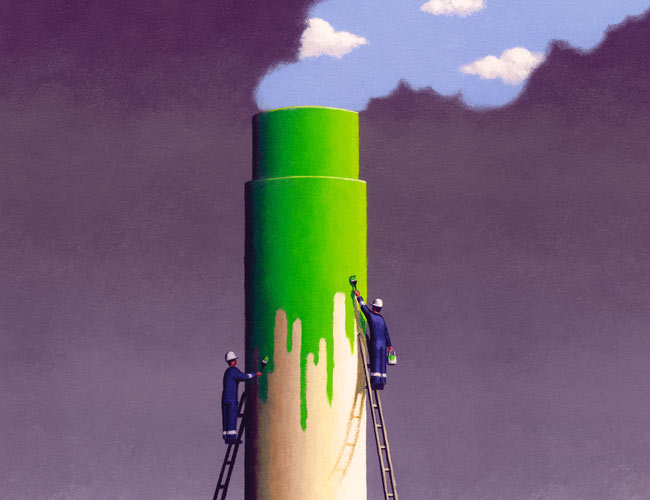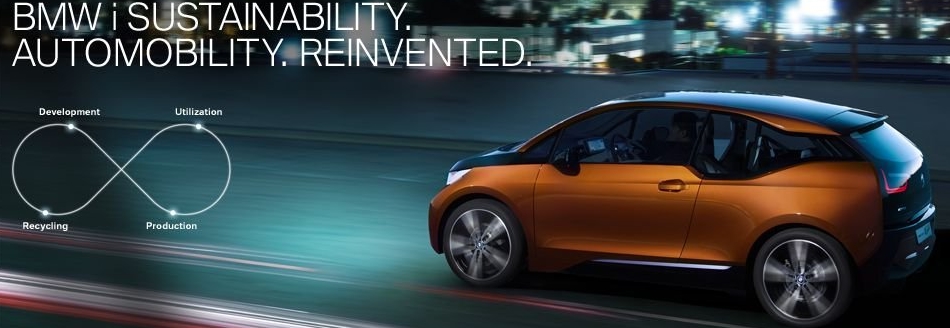

The term “Greenwashing” has entered the public discourse, usually as an accusation against companies trying to make themselves appear sustainable or environmentally friendly. Simply put, “Greenwashing” is a form of marketing that creates the perception that a company’s products, aims or policies are “green”. This can take on a variety of different forms, from changing the name or label of a product to advertising campaigns highlighting the eco-friendliness of a particular business.
Since the 1980s, an increasing number of businesses have employed Greenwashing methods in response to a growing demand for eco-friendly goods and services. The problem with Greenwashing is that all too often, the efforts to make a product appear more “green” does not entail it is better for the environment (in fact it can sometimes have the adverse effect) : the lack of standards and regulations around what constitutes eco-friendliness means that pretty much anything can be marketed as “green”. In this article, we aim to explore Greenwashing through the lens of businesses and consumers, starting with a brief explanation of the context that made it a common practice.
The Green Wave
In the last decades, the idea of a greener planet has gained traction in the popular imaginary. It started with companies in the 1980s that realised the importance of a green image, in response to civil society movements that raised awareness of some industries’ impact on the environment.
The most common tool for Greenwashing, still used today, is advertising. Companies like DuPont tried to present a green image with advertisements, which nowadays seem hilarious to a critical viewer.
Perhaps unexpectedly , this practice of greenwashing through advertising campaigns was quite successful. Constant spamming of advertisements made people aware of environmental issues, and resulted in polarizing opinions.
The use of Greenwashing advertisements raised awareness of environmental issues, which strengthened the green movement. On the other hand many activists claim that the companies’ initiatives are creating a misleading perception of the company.
As a result, the process of greenwashing has become more complex but hasn’t been become more transparent. In fact, it is not the first time that misleading advert campaigns obscure the actual impact of a commodity. In the 1950’s cigarettes and alcohol were frequently advertised and presented as healthy. Strangely enough, it became a social standard to smoke the best cigarettes.
60 years later the image changed and in most of the countries advertisements for cigarettes are forbidden. But we all know how many campaigns and scientific proof it took to change this image, that was intentionally created by the tobacco lobby.
It is just as hard to shop yourself to sustainability as it is to smoke yourself to a healthy lung.
Selling the Green Idea
Most companies want to reach their customers in a very individual way, and craft their adverts to target a specific demographic. Greenwashing is no exception. Since environmental concerns exist in most Western society, it has become strategically useful for many companies to present a green image.
A good example is the UN Climate Conference 2009 where several well-known brands (Coca Cola, BMW, DuPont..) took the opportunity to present a greener image of themselves. BMW for example, sent hydrogen powered cars to the climate conference. But then, several newspapers reported that immediately after the conference the further development of these cars had been stopped. BMW denies that and says that there would be further development, but no production anytime soon.

A company’s green image is also crafted by the design of the products we buy. It is common for many supermarket chains to change the package of a product to a design that looks ‘greener’ (for instance changing the bag from white to a brown recycled-style look). Many brands also have their own ‘green seals’ (certificates of eco-friendliness) put on certain products. Since there are no strict rules or regulations of what sustainability, green or eco is, these words have effectively lost any meaning, and can be used instrumentally by companies to appeal to a certain target group.
The German brewery Krombacher had to make that experience. In 2002, Krombacher started a campaign together with WWF. The idea was to donate for the protection of rainforests for every beer crate. What was at the beginning a simple PR strategy ended up changing the whole image of the company.
In the following months they received countless complaints and requests about how the company itself is contributing to environmental protection. However, the campaign with WWF was the only thing that was behind this green image.
Little by little, the company started to work on other aspects of environmental protection in order to keep this green image. As a result, this pressure from civil society led the brewery to be more eco-friendly than it was before 2002. Still, eco-friendliness is not their priority. As one of the biggest German breweries it was just not possible to provide all of the barley bio-quality, they say.
In a way, the “green wave” of the society is making businesses greener even though this is rarely their intention. At the end of the day, the question remains if the intention or the result is what counts.
The Quick Green Fix
Jane Hoffman writes that Greenwashing is “what happens when a hopeful public eager to behave responsibly about the environment is presented with ‘evidence’ that makes an industry seem friendly to the environment”. Her point is that the practice of Greenwashing, and the problems it entails, only exists because there is a demand from us as consumers. This demand for superficially ‘green’ products is itself a product of our times. We don’t have the energy or inclination to investigate whether a product we are buying is actually eco-friendly, we just want the immediate gratification of knowing we are contributing positively to the issue.
This is the criticism that philosopher Slavoj Zizek makes at consumers who take a ‘quick green fix’, for instance by buying fair trade coffee from Starbucks. He argues that what companies like Starbucks allow you to do is to ‘be a consumerist without a bad conscience, because the price […] for fighting consumerism, is already included in the commodity…I think it’s the ultimate form of consumerism’. Zizek would thus consider Greenwashing to be part of the capitalist ideology, because it provides the means for environmentally-conscious consumers to keep participating in the system they are criticizing.
As a consumer, the only way to avoid getting “Greenwashed” is to investigate which companies are truly ‘green’ and which ones are merely pretending. This involves reading the labels of clothes and food, doing some research online, and asking uncomfortable questions. Resources like Ecolabels Index, which tracks almost 500 Ecolabels across 200 countries, can make this task easier, but the sad reality is that no current ‘green standard’ (Organic, FairTrade, vegan…) can itself guarantee the eco-friendliness of a product. We would like to see international organizations (such as the EU or the UN) develop transparent standards for eco-friendliness that truly reflect the impact of the commodities.
Praying to the Green God
In this light, Greenwashing is a consequence to consumers’ demand for ‘greener’ products, and companies’ reaction to that. But it is not the companies’ primary aim to be green. In many industries it is not even possible to combine sustainability and maximize profit.
Capitalism has proven remarkably able to adapt to the demands of consumers, and the call for greener products from civil society is no exception. Greenwashing has effectively co-opted the concepts of sustainability and eco-friendliness into modern business practices, with mixed results. In some cases, such as the Krombacher brewery, it has incentivized companies to become actually greener, with positive results for the environment. But most of the time, companies like BMW have only gotten better at masquerading, and consumers have been only too happy to enjoy the ‘green opium’ they provide.
Written by Milan Maushart and Mischa Snaije
